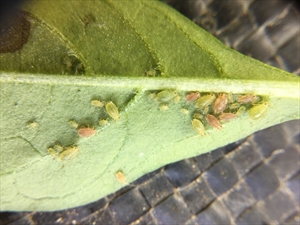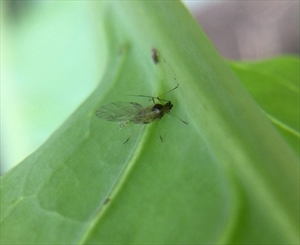AUTHOR Grahame Jackson
1Information from Swaine G (1971) Agricultural Zoology in Fiji. Her Majesty's Stationery Office. London; and CABI (2016) Myzus persicae (green peach aphid) Crop Protection Compendium (https://www.cabi.org/cpc/datasheet/35642); and Waterhouse DE, Sands DPA (2001) Classical biological control of arthropods in Australia, ACIAR Monograph no. 77, 560pp.; and from Capinera JL (2020) Myzus persicae (Sulzer). Featured Creatures. Entomology & Nematology. UF/IFAS, University of Florida. (http://entnemdept.ufl.edu/creatures/veg/aphid/green_peach_aphid.htm). Photos 1-6 Mani Mua, Sigatoka Research Station, Fiji.
Produced with support from the Australian Centre for International Agricultural Research under project PC/2010/090: Strengthening integrated crop management research in the Pacific Islands in support of sustainable intensification of high-value crop production, implemented by the University of Queensland and the Secretariat of the Pacific Community.








